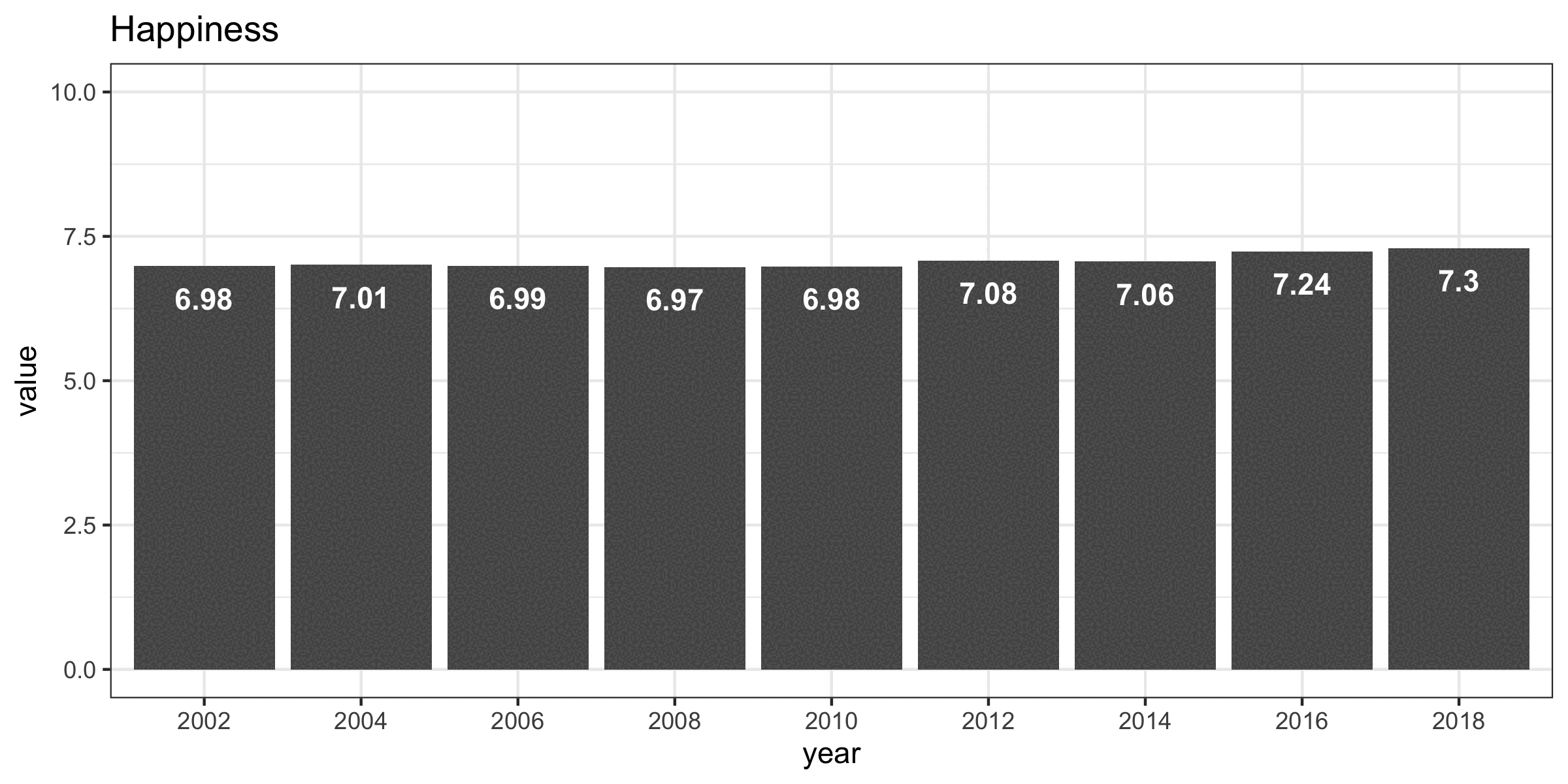Three years ago, I wrote a blog post on how happiness developed in Europe between 2002 and 2016. Using data from the European Social Survey, I analyzed self-reported levels of happiness, Internet use, social behavior, or health.
For a review I’m currently writing, I now updated these analyses with the (somewhat) new data for 2018 (2020 isn’t available yet). Overall, the data now include the responses of 430.870 (!) respondents.
Are people nowadays more happy than they used to be?
Again, the results were surprising.
- Levels of happiness are increasing steadily. Europeans nowadays are more happy than roughly 20 years ago. The effect isn’t huge, but noticeable.
- People are slightly less socially active than before.
- The number of discussion partners is stable. (Note that the response format changed in 2012.)
- Health and health problems are stable.
- Not surprisingly, Internet use increased strongly. (Note that no data are available after 2010 because the items were changed thoroughly.)

What are the results if we only look at younger respondents (i.e., age 15 – 24)?
- Levels of happiness are higher and they are also increasing.
- Not surprisingly, youth report better health and less health problems.
- Youth are more active socially. However, activity levels seem to decrease more strongly as compared to the entire sample.

Together, the results again emphasize that, at least in Europe, the kids seem alright. The general development is definitely not negative. It even seems possible that youth in Europe are now happier than ever.
I’m already curious how the data for 2020 will look like. I could imagine that the pandemic did have a stronger effect on how happy people were, but that remains to be seen.
As always, you can check and rerun the analyses on github. To rerun the analyses, you first need to download the data from ESS.
